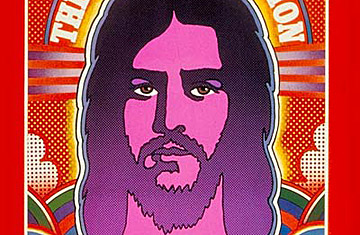
The Jesus Revolution
(3 of 11)
The search for a "yes" led thousands to the Oriental and the mystical, the occult and even Satanism before they drew once again on familiar roots. One of the nation's successful young evangelists, Richard Hoag, 24, believes that many of his youthful converts see Jesus as a marvelous father figure. "The kids are searching for authority, love and understanding—ingredients missing at home. Jesus is what their fathers aren't." Adds Baptist Pastor John Bisagno: "I'm amazed at how many people I've counseled who have never heard their fathers say 'I love you.' "
Christ Couture
The enthusiasm is not universal. By no means a majority of the young, or their elders, are soldiers in the revolution —any more than they were flower children or acid trippers. Some call the Jesus movement a fad or just another bad trip. Is it? Is the growing fascination with Jesus a passing, adolescent infatuation? There are obvious fad aspects: Jesus shirts (JESUS is MY LORD) bumper stickers (SMILE, GOD LOVES YOU), posters, buttons (THE MESSIAH is THE MESSAGE) and, inevitably, a Jesus-People wristwatch. Some followers are affecting a Christ couture: white pants and tunics, Mexican-peasant style. There are de rigueur catch phrases: endless "Praise Gods" and "Bless Yous." There is even a "Jesus cheer"—"Give me a J, give me an E . . ." Rapidly catching on is the Jesus-People "sign," a raised arm with clenched fist, the index finger pointed heavenward, to indicate Jesus as the "one way" to salvation. "If it is a fad," says Evangelist Billy Graham, "I welcome it."
There are signs that the movement is something quite a bit larger than a theological Hula-Hoop, something more lasting than a religious Woodstock. It cuts across nearly all the social dividing lines, from crew cut to long hair, right to left, rich to poor. It shows considerable staying power: many who were in its faint beginnings in 1967 are still leading it. It has been powerful enough to divert many young people from serious drug addiction. Its appeal is ecumenical, attracting Roman Catholics and Jews, Protestants of every persuasion and many with no religion at all. Catholics visit Protestant churches with a new empathy, and Protestants find themselves chatting with nuns and openly enjoying Mass. "We are all brothers in the body of Christ," says a California Catholic lay leader, and he adds: "We are on the threshold of the greatest spiritual revival the U.S. has ever experienced."
Pentecostals and Millenarians
Spiritual revivals are, of course, a longstanding American tradition. George Whitefield and Jonathan Edwards led the first Great Awakening in the 1740s and there have been others since: the frontier camp meetings at the beginning of the 19th century, the great revival of the 1850s, and the Pentecostal explosion at the beginning of the 20th century. The Jesus revolution, like the others, has a flavor peculiarly American. Its strong Pentecostalism emphasizes such esoteric spiritual gifts as speaking in tongues and healing by faith. For many, there exists a firm conviction that Jesus' Second Coming is literally at hand. Proclaiming the imminent end of the world and Last Judgment like so many dread
